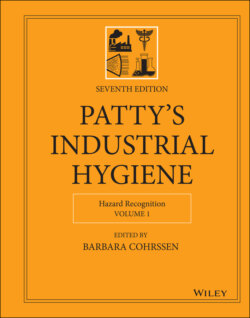Читать книгу Patty's Industrial Hygiene, Hazard Recognition - Группа авторов - Страница 126
6.3 Risk Communication for EHS Results
ОглавлениеThe simplified risk communication language provided by RLBMS and its framework brings together the roles and responsibilities of workers and expertise of EHS field practitioners to create a comprehensive EORM that is built with a bottom‐up approach. EHS staff become an essential part of translating this knowledge into action in not just raising the consistent issues facing them over the years but also presenting an integrated component in developing solutions that are positive for everyone involved. Through this process, the RLBMS provides a comprehensive knowledge approach to workplace risk management that can be compiled and sold to upper management as a benefit to operations and a cost‐effective approach for highly stressed and shrinking EHS resources. In implementing the participatory approach, EHS staff meet with their workforce and begin by exchanging their knowledge on the most commonly performed tasks and their related risks.
Teams of affected workers, EHS staff, and management representatives then meet to further develop this approach. With the RLBMS and its derived procedures identified and tasks isolated, the workers then take the lead in communicating to management how these tasks should be performed to reduce work‐related risks. For the more commonly performed activities, primarily as RL1 and RL2 tasks with some RL3 examples mixed in, the teamwork of EHS staff and workers can be shown in the aligning of hazard‐to‐control designations for tasks and assigned RLs based on the depth and integrity of supporting data. Management involvement in this process is best optimized when it is limited to assuring final product quality and understanding the needs and expectations of their workers on a first‐hand basis. Once agreements for management support and dedication of resources are reached, the next steps should be the documentation of the approach, training, and procedural requirements to maintain this system over time. Risk communication and knowledge building needs to involve employees, EHS staff, and management working together toward optimizing EORM programs to maximize EHS resources and capabilities. This strategy provides a comprehensive risk communication language and a process that is invaluable for receiving worker buy‐in and achieving program implementation in the short term. It can also help in attaining the elusive long term goal of EHS staff everywhere; the retention of program expectations amongst workplace peers for many years to come (11).
